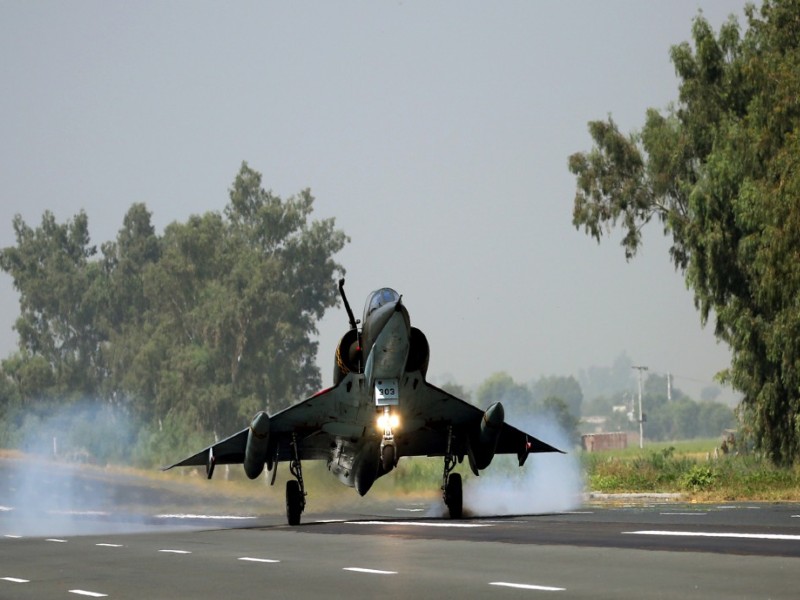
The Pakistan Air Force (PAF) was working on a project to indigenously-develop unmanned aircraft based on artificial intelligence (AI) to team up with manned fighter jets in different scenarios, a senior official said on Thursday.
This came as Pakistan formally launched its advanced drone called Shahpar-III during the ongoing 12th edition of the International Defence Exhibition and Seminar (IDEAS-2024) at the Karachi Expo Centre. The four-day [November 19-22] event would conclude on Friday (today).
Air Commodore Dr Salman Aslam, who heads the Central Ward Intelligence and Computing at the PAF, while speaking to The Express Tribune on the sidelines of IDEAS-2024, said that the PAF initiated the AI-based project some four-year ago.
The project was started with the idea that a manned warplane in the air would be communicating and operating with a number of unmanned fighter jets in the sky, he said. "The unmanned planes may be 15, 100 or 1,000. The concept of 'manned and unmanned teaming' is the future [of air combat]," he said.
"It, however, remained difficult at present to give a definite timeline, when the PAF would actually induct the 'manned and unmanned teamed' jet in its fleet," Air Commodore Aslam said. "It may take 10-year, 20-year, 25-year or 30-year," he added.
Dr Aslam, while responding to a theoretical question, said that a debate continued around the world whether the AI could fly a fleet of warplanes without any pilots. "Some believe it is possible, others say otherwise," he added.
At the IDEAS-2024, the PAF put on display the third-generation JF-17 warplane. "The JF-17, Block-3 or third generation, is an advanced version of the JF-17 Block-2, which was part of Pakistan Air Force's fleet that downed two Indian aircraft in February 2019," another PAF officer said.
While highlighting the salient features of the plane, the officer said that the fighter jet's capability had been built around highly modern and state-of-the-art avionics equipment that could undertake high-tech aerial warfare in all-weather operations.
"The aircraft is capable of carrying some of the most modern as well as conventional weapons including beyond visual range active missiles, highly agile imaging infrared short-range missiles, air-to-sea missiles, anti-radiation missiles and laser-guided weapons," he added.
Shahpar-III launched
At the IDEAS-2024, Asad Kamal, the chief executive officer of the Global Industrial & Defence Solution, Pakistan (GIDS-Pakistan) announced the formal launch Shahpar-III drone. He said that Shahpar-III had the surveillance and defence capabilities, comparable with Turkiye's advanced drone technology.
The unmanned aerial vehicle, Shahpar-III, could fly for 12-16 hours at the height of 30,000 feet, with the capability of carrying six weapons - three on each wing. "It can be used for both surveillance and for defence purposes," Kamal said.
"It has the capability of finding terrorists hiding in a building or under the sea, and attacking them. It is capable of carrying air-to-ground and air-to-sea attacks It can locate the target within the range of 25 to 1,000 kilometres," he added.


1732274008-0/Ariana-Grande-and-Kristin-Chenoweth-(1)1732274008-0-165x106.webp)



1732270499-0/Express-Tribune-(7)1732270499-0-270x192.webp)
1732267715-0/BeFunk_§_]__-(32)1732267715-0.jpg)

1732263788-0/BeFunk_§_]__-(30)1732263788-0.jpg)
1732268955-0/BeFunk_§_]__-(33)1732268955-0.jpg)







COMMENTS
Comments are moderated and generally will be posted if they are on-topic and not abusive.
For more information, please see our Comments FAQ